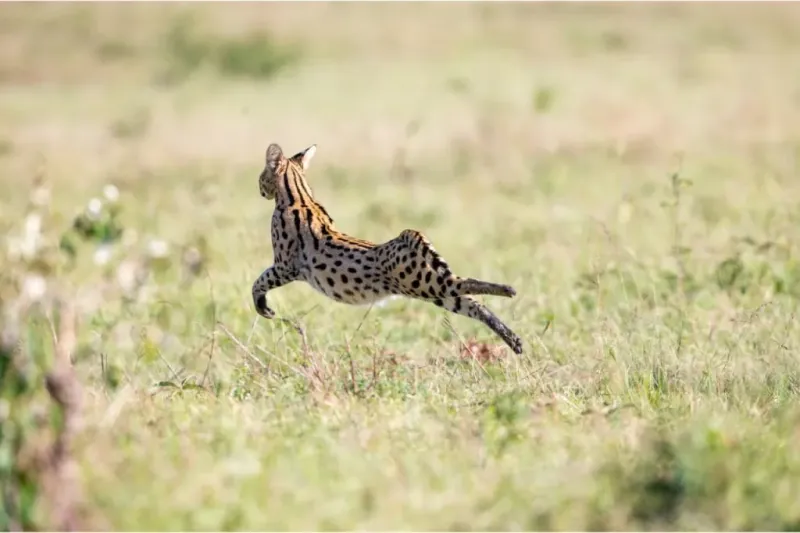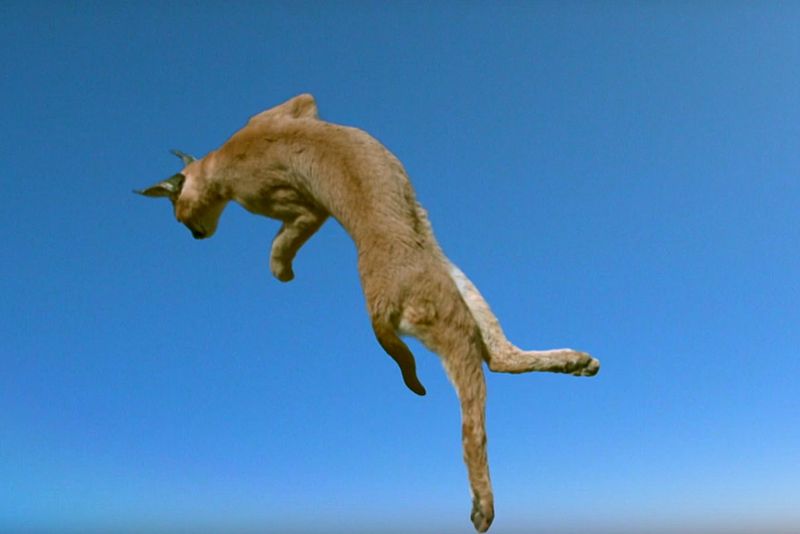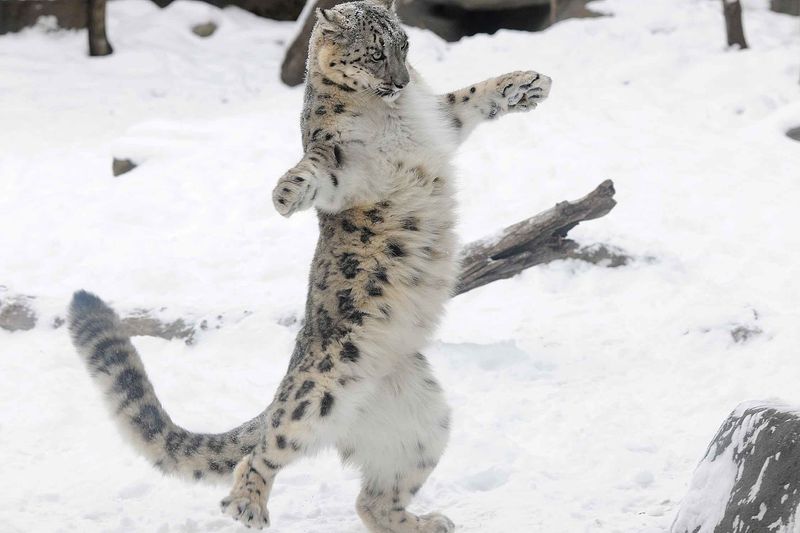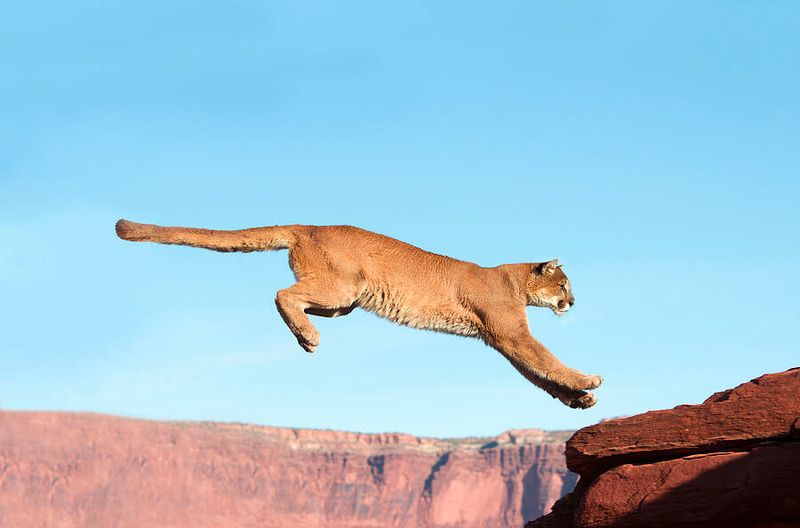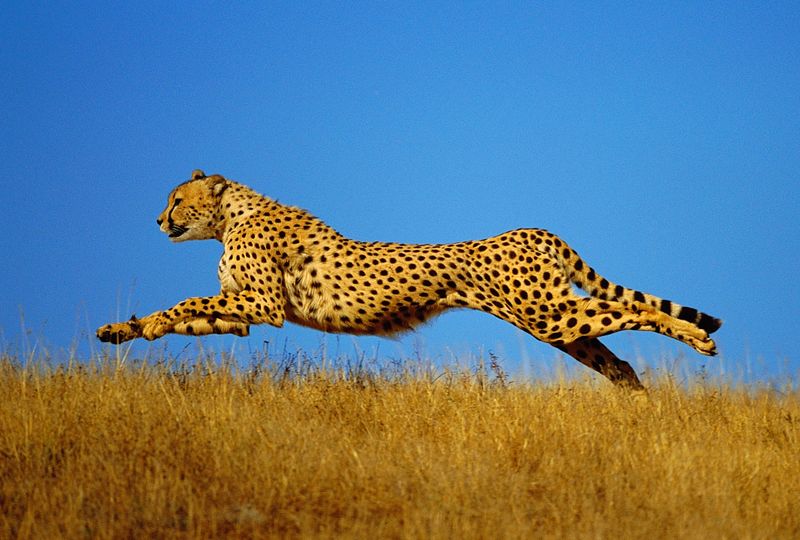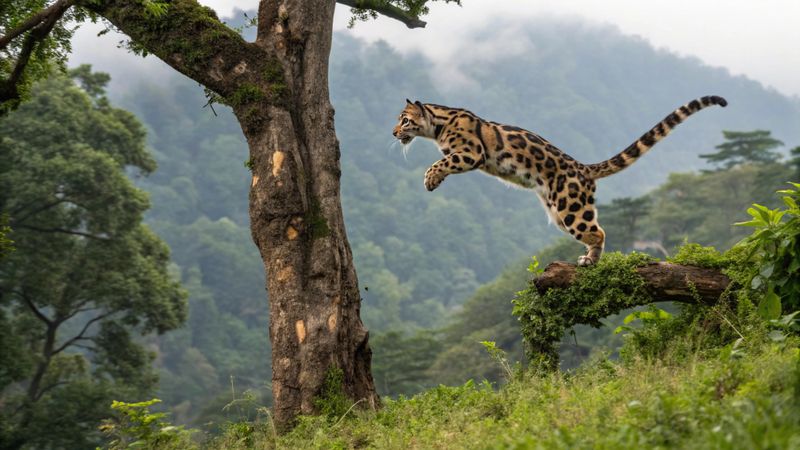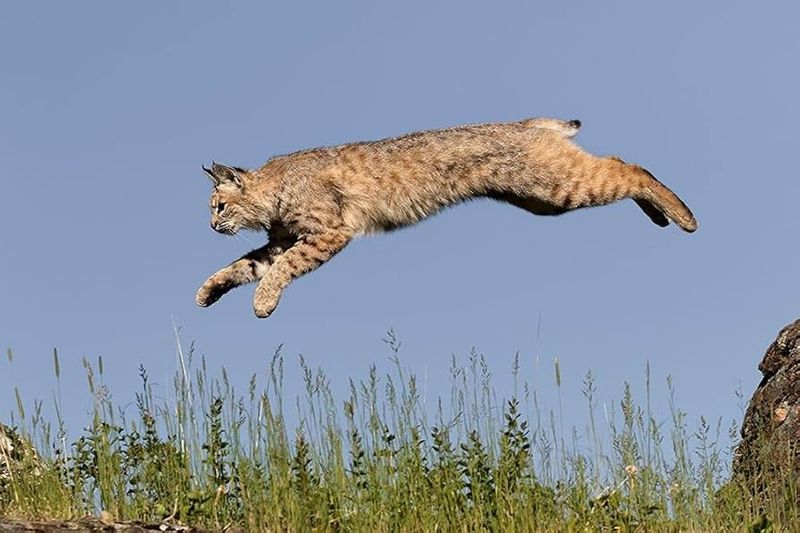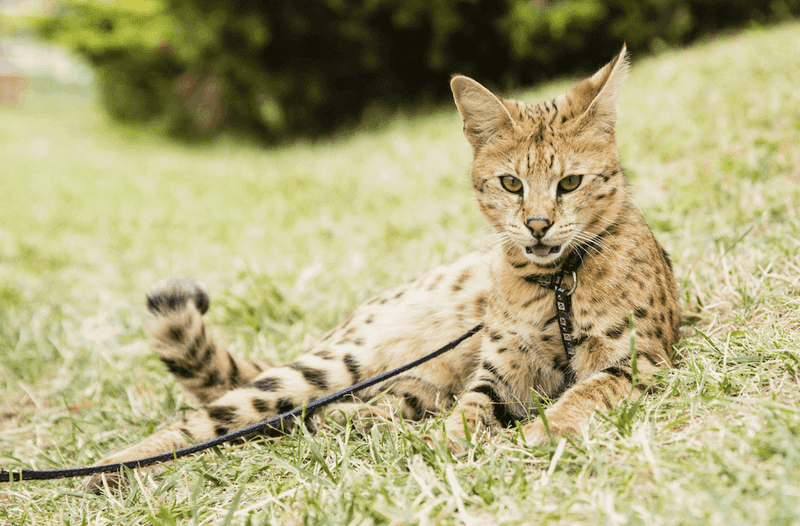📖 Table of Content:
When it comes to athletic prowess in the animal kingdom, wild cats dominate the leaderboard with their incredible agility and power. Among their most astonishing feats is the vertical leap—an explosive display of strength, precision, and instinct. Watching one of these felines spring straight into the air to catch a bird in flight or scale a steep cliff face is nothing short of awe-inspiring.
Nature has finely tuned the bodies of these predators to support such feats, equipping them with muscular hind legs, flexible spines, and sharp reflexes. Each species exhibits a unique style and purpose behind its vertical prowess—some use it to ambush prey, others to escape danger, and a few to navigate their complex habitats. These jumping capabilities aren’t just impressive—they’re a vital part of how these animals survive and thrive in the wild.
In this article, we’ll explore eight wild cats that can leap over 10 feet straight up. From the sleek serval of the African savanna to the elusive snow leopard of the Himalayas, each of these species tells a story of evolution, adaptation, and raw feline athleticism. Prepare to meet nature’s most gravity-defying hunters.
1. Serval
Gracefully bounding through the tall grasses of the African plains, the serval is a master of vertical leaps. With long legs and an elongated neck, this cat has a silhouette that hints at its extraordinary abilities. A serval’s jump is not just about height; it’s about precision, as it often targets birds in flight or prey hidden in thick vegetation. This hunting strategy allows it to surprise victims from above, snatching them before they even react. Their powerful hind legs act like coiled springs, launching them into the air with shocking speed. Despite weighing only around 20-40 pounds, servals can launch themselves up to 10 feet high in a single bound. Such explosive agility makes them one of the most acrobatic cats in the wild.
2. Caracal
Leaping like a missile from the earth, the caracal’s jumps are both stunning and surgical. Unlike the serval’s slender form, the caracal is stockier and more robust, yet no less nimble. It often launches vertically into the air with its front paws extended, aiming to bat birds out of the sky in mid-flight. What makes the caracal even more striking are its tufted black ears, which give it a distinctive appearance and help with sound localization. Able to jump up to 10 feet straight up, it often takes down multiple birds at once during coordinated leaps. This behavior is frequently observed during dusk and dawn, when caracals are most active. In the wild, their leaping skill is a decisive factor in their success as solitary hunters.
3. Snow Leopard
Hidden among the jagged cliffs of Central Asia, the snow leopard is a quiet but mighty jumper. Adapted for life at high altitudes, this elusive cat uses its powerful hindquarters to leap vertically when navigating rocky terrain or ambushing prey. Unlike other cats that leap for birds, snow leopards use their vertical skills to scale steep inclines or ledges as high as 20 feet. Their thick, muscular tails help with balance during these acrobatic feats, acting like a rudder in mid-air. With large, furry paws that act as natural snowshoes, they gain traction even on slippery surfaces. These incredible leaps help the snow leopard remain both predator and phantom in some of the harshest habitats on Earth. Their power and grace are vital to their survival in environments where one misstep can mean death.
4. Cougar (Mountain Lion)
Charging from rocky outcroppings or forest floors, cougars—also known as mountain lions—are formidable leapers in their own right. Their ability to spring up to 18 feet vertically is not just impressive—it’s functional. These large cats use their jumping strength to scale cliffs, jump into trees, or pounce down onto unsuspecting prey. Muscular and lean, cougars rely on a mix of stealth and athleticism to dominate diverse landscapes from the Canadian Rockies to the Argentine Andes. Their vertical leap is often a prelude to a powerful takedown, allowing them to surprise even agile deer or goats. Solitary by nature, cougars often spend their nights stalking silently, with their jumps being both a means of movement and attack. No matter the environment, their leaps reveal their mastery of three-dimensional hunting.
5. Cheetah
Defined by its speed, the cheetah might not be the first cat that comes to mind for vertical power—but it shouldn’t be underestimated. Capable of leaping up to 10 feet straight up, the cheetah’s jumps are critical during high-speed chases. It may use this burst to vault over obstacles or to initiate a pounce at the end of a pursuit. Though built for acceleration, the cheetah’s lean frame and flexible spine also lend it surprising agility and height. During the chase, it often adapts instantly to terrain by leaping and bounding, changing directions mid-air. These leaping abilities complement its speed, giving it a greater tactical edge over prey. Cheetahs truly embody the fusion of grace, quickness, and vertical strength.
6. Leopard
Roaming the dense forests and savannas of Africa and Asia, leopards are perhaps the most versatile athletes of the cat world. Capable of leaping over 10 feet vertically, they frequently employ this ability to climb trees, where they stash prey out of reach of scavengers. Their bodies are muscular and compact, designed for explosive action over short distances. Often, a leopard will jump up a tree trunk with a full-grown antelope in its jaws—a feat that illustrates both its strength and aerial ability. This upward momentum is crucial for their solitary and stealthy lifestyle, allowing them to vanish from ground threats. Despite being elusive, leopards display these acrobatic feats with confident ease in both jungle and urban-edge environments. Their jumping prowess underscores a survival strategy based on cunning and physical dominance.
7. Bobcat
Bounding through the forests and deserts of North America, the bobcat blends its modest size with remarkable power. It has been recorded leaping vertically up to 12 feet, often to catch birds or escape predators. Though relatively small, its muscle-packed hindquarters allow it to spring from a standstill with surprising velocity. In the wild, this jump is an essential part of its hunting arsenal, especially when targeting flying or fast-moving animals. Bobcats use their sharp senses and rapid reflexes in combination with these leaps to snatch prey out of thin air. Agile and silent, they can traverse terrain filled with brush or rock in seconds. Whether hunting or avoiding danger, their leaping ability keeps them a step—or a leap—ahead.
8. Savannah Cat
Emerging from a blend of wild and domestic bloodlines, the Savannah cat is a hybrid marvel. Though technically part domestic, its serval ancestry gives it an astonishing ability to jump as high as 8 feet straight up. Pet owners often marvel at their ability to reach the tops of refrigerators, doors, or high cabinets with ease. Their long legs and lean bodies enable explosive vertical launches from almost any surface. Unlike most domestic breeds, Savannah cats use their vertical prowess as part of both play and predatory instinct. They are curious and highly active, often testing the limits of their environment. This hybrid’s leaping ability offers a living example of how wild traits persist even in partially tamed animals.

